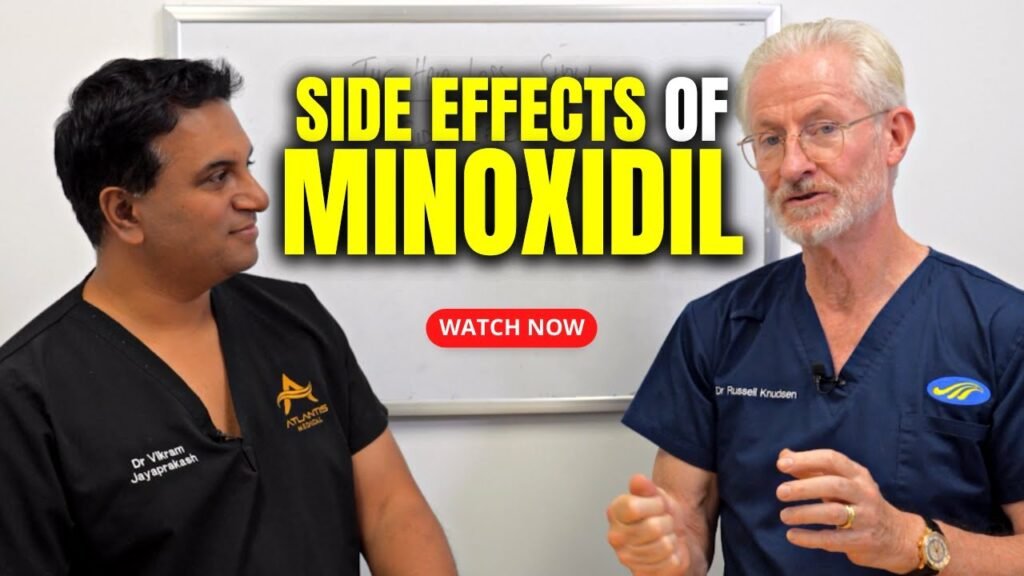Understanding Minoxidil and Its Uses
Minoxidil is a well-known medication primarily used for the treatment of hair loss. Originally developed as an oral medication for high blood pressure, researchers discovered its hair growth side effects, leading to its topical application for combating baldness. The most common form of minoxidil is a topical solution or foam, applied directly to the scalp to stimulate hair follicles and promote regrowth. Its particularly effective for androgenetic alopecia, commonly known as male or female pattern baldness, which is characterized by progressive hair thinning.
Minoxidil works by prolonging the anagen phase, which is the active growth phase of hair follicles. This results in increased hair density and thickness over time. Users typically apply minoxidil twice daily, with consistent use being key to seeing results. While some users may experience initial shedding, this is usually a temporary phase as new, healthier hairs begin to emerge. Its important to note that the effects of minoxidil are not permanent; discontinuation of use will likely result in the loss of newly regrown hair.
Beyond hair loss, minoxidil is also used in certain cases of alopecia areata, a condition characterized by sudden, patchy hair loss. However, its efficacy varies among individuals, and it is not universally effective for all types of hair loss. Side effects are generally mild and may include scalp irritation or dryness. As with any medication, its crucial to follow usage instructions carefully and consult with a healthcare provider to ensure its appropriate for your specific condition.
What Causes Facial Swelling When Using Minoxidil?
Facial swelling, or edema, is a potential side effect for some individuals using minoxidil, a popular topical treatment for hair loss. This swelling can be alarming and uncomfortable, and understanding its causes is essential for those considering or currently using the treatment. One primary reason for facial swelling is the bodys reaction to the active ingredient in minoxidil. As a vasodilator, minoxidil works by widening blood vessels to improve blood flow, which can inadvertently lead to fluid retention in some users. This fluid retention may manifest as puffiness or swelling, particularly in the face.
Allergic Reactions and Sensitivities
Another possible cause of facial swelling is an allergic reaction or sensitivity to minoxidil or its inactive ingredients, such as propylene glycol or alcohol, which are often included in the formulation to aid absorption. Individuals with sensitive skin or allergies may experience an inflammatory response, resulting in swelling. It’s crucial to perform a patch test before applying minoxidil more broadly, as this can help identify potential allergic reactions early. Signs of an allergic reaction can include not only swelling but also redness, itching, or rash, indicating the need for discontinuation and consultation with a healthcare professional.
Improper Application and Overuse
Improper application or overuse of minoxidil can also contribute to facial swelling. Using more than the recommended dose can increase the likelihood of systemic absorption, which might lead to side effects such as swelling. Minoxidil is intended for topical use on the scalp, and applying it to other areas can exacerbate unwanted side effects. Following the instructions carefully and using the appropriate amount can minimize the risk of facial swelling and other adverse reactions. If swelling persists, its advisable to consult a healthcare provider to explore alternative treatments or adjust the dosage.
Is Facial Swelling from Minoxidil a Common Side Effect?
Minoxidil, a popular treatment for hair loss, is generally well-tolerated by most users. However, like any medication, it comes with its own set of potential side effects. Among these, facial swelling is one that some users have reported. While not everyone experiences this side effect, its crucial to understand how common it is and what factors might contribute to its occurrence.
Understanding Facial Swelling with Minoxidil Use
Facial swelling is not listed as one of the most common side effects of minoxidil, which typically include itching, redness, or irritation at the site of application. However, some users have reported experiencing swelling, particularly around the eyes and cheeks. This reaction may be due to an allergic response or sensitivity to the active ingredients in minoxidil or the alcohol and propylene glycol often used in its formulation.
Factors Contributing to Facial Swelling
Several factors could contribute to facial swelling when using minoxidil. Individual sensitivity plays a significant role; those with sensitive skin or allergies may be more prone to this side effect. Additionally, improper application—such as using more than the recommended dosage or applying it to areas beyond the scalp—can increase the likelihood of adverse reactions. Monitoring for any signs of swelling and consulting with a healthcare professional if they occur can help manage and mitigate this side effect.
How to Manage and Prevent Minoxidil-Induced Facial Swelling
Experiencing facial swelling as a side effect of minoxidil can be concerning, but there are several ways to manage and potentially prevent this issue. First and foremost, it is crucial to consult with a healthcare professional before starting or adjusting the dosage of minoxidil. They can provide personalized advice and determine if minoxidil is the best option for your needs. Additionally, using a lower concentration of the medication may reduce the likelihood of swelling. Start with the lowest effective dose and gradually increase it only if necessary, under medical supervision.
To minimize the risk of facial swelling, consider incorporating lifestyle changes that support overall health and reduce inflammation. Stay hydrated by drinking plenty of water, as proper hydration can help maintain fluid balance in the body. A diet rich in anti-inflammatory foods, such as fruits, vegetables, and omega-3 fatty acids, can also be beneficial. Regular exercise and adequate sleep are essential components of a healthy lifestyle that can further help in managing side effects.
If you notice facial swelling after using minoxidil, there are several steps you can take to alleviate the discomfort. Applying a cold compress to the affected area may reduce swelling and provide relief. Over-the-counter antihistamines can be another option to consider, as they may help reduce swelling by counteracting any allergic reactions. However, always consult with a healthcare provider before taking any additional medications. Monitoring your symptoms and keeping a detailed record can be useful when discussing treatment options with your doctor.
When to Seek Medical Advice for Minoxidil Side Effects
While minoxidil is generally safe for many users, there are certain side effects that necessitate immediate medical attention. If you experience severe or persistent side effects, its crucial to consult with a healthcare professional promptly. Serious side effects such as chest pain, rapid heartbeat, dizziness, or swelling of the hands and feet should not be ignored. These symptoms could indicate a serious reaction to the medication and warrant urgent medical evaluation.
Recognizing Allergic Reactions
An allergic reaction to minoxidil, although rare, can be life-threatening. Symptoms of an allergic reaction may include difficulty breathing, swelling of the face, lips, tongue, or throat, and severe skin rash. If you notice any of these signs, its important to seek emergency medical care immediately. Early intervention can prevent complications and ensure that appropriate measures are taken to address the reaction.
Persistent or Worsening Side Effects
In some cases, users may experience side effects that are not severe but become bothersome or do not resolve over time. Common side effects like scalp irritation, itching, or unwanted facial hair growth should be discussed with a healthcare provider if they persist or worsen. A medical professional can provide guidance on whether to continue using the product or explore alternative treatments. Regular follow-up appointments can also help in monitoring your condition and adjusting the treatment plan as needed.


